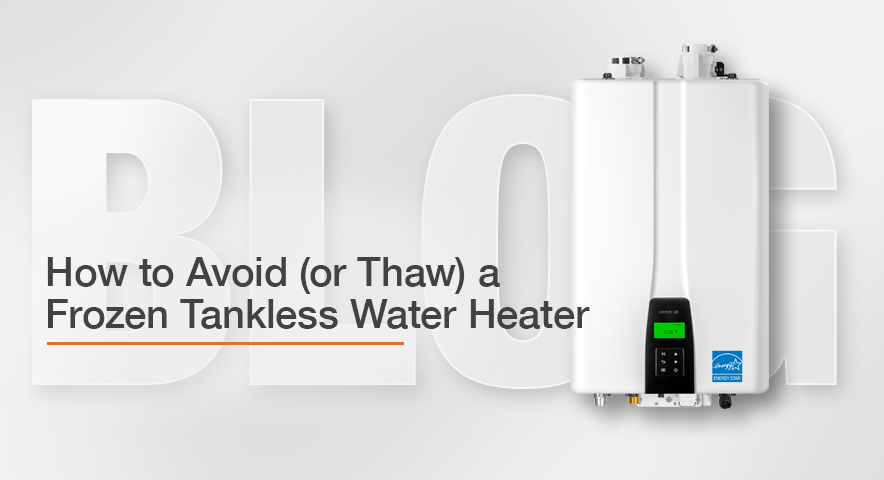Unlike traditional tank-style water heaters, tankless water heaters don’t store hot water. This means tankless models have a greater risk of freezing up in cold weather.
Frozen water can damage your tankless water heater, but there are simple precautions you can take to keep your tankless hot water heater from freezing:
- Do not unplug the power supply cord, except for routine maintenance. Your Navien tankless water heater has a freeze protection function that requires electricity. The freeze protection function will operate whether or not the front panel is powered on or off but the power toggle switch and power cord must be ON and connected.
- If your building is prone to frequent power outages, consider a battery backup or generator when freezing weather is predicted.
- Do not close the gas valve, except for routine maintenance. Closing the gas valve will limit additional freeze protection.
- If you must disconnect the power or gas for an extended period, drain the water heater.
- Insulate water pipes connected to the water heater.
- Use hot water on a regular basis to keep the pipes warm.
Winterizing a Tankless Water Heater
To winterize your tankless water heater:
- Drain the water heater
- Disconnect the power and gas supply
- Shut off the cold water supply
This will help protect against freezing while you’re away. Find instructions for draining Navien tankless water heater in your user's manual.
Protecting Outdoor Tankless Water Heaters
Tankless hot water heaters installed outdoors have a higher risk of freezing. Do not install a tankless water heater outdoors in areas prone to freezing temperatures.
Choosing a sheltered exterior location can also help prevent freezing issues. If possible, install your outdoor tankless water heater where it will be sheltered from wind, or build an enclosure that blocks the wind.
Install a pipe cover to conceal and protect the gas, water and power connections. Insulate pipes to keep freezing temps from reaching water lines.
Protecting Indoor Tankless Water Heaters
Tankless water heaters installed indoors can freeze if there’s a power outage, or if there’s back drafting caused by negative pressure in the building. Back drafting draws cold air into the unit via the exhaust pipe which can cause internal components such as the heat exchanger coil or condensate drain to freeze.
In freezing temperatures, condensate produced by a condensing tankless hot water heater can freeze inside the drain line, which can cause leakage, operation issues or shutoff.
To help keep your indoor tankless water heater from freezing, use a direct vent exhaust & intake system. Both the exhaust vent pipe and the air intake pipe should be connected directly from the collars on the top of the water heater to the outdoors.
A direct vent system minimizes air movement in the water heater and helps keep the condensate drain and other components from freezing.
Navien Tankless Water Heater Freeze Protection
Navien tankless water heaters have an optional recirculation mode to be used for freeze protection.
The recirculation mode should help prevent the water heater from freezing, even if the air intake duct isn't vented directly. Note that this function requires electricity to operate.
All Navien gas tankless water heaters (natural gas or liquid propane) include the freeze protection feature.
Whenever your tankless water heater will not be used for an extended period, drain the water heater. Any standing water in the unit will expand if it freezes, which could cause damage.
Damage caused by freezing is not covered by the Navien limited warranty. We strongly recommend taking every precaution to prevent freezing issues.
Thawing a Frozen Tankless Water Heater
If hot water will not flow and you suspect your tankless water heater is frozen, follow these steps:
- Press the Power button on the front panel to turn off the water heater.
- Close the gas valve.
- Open the hot water faucet that is closest to the water heater.
- Use a hair dryer or a portable electric heater to heat up both the primary and secondary heat exchangers.
- Check every few minutes to see if water is running at the open faucet.
- When the water starts flowing again, check the water heater and piping for leaks. If you detect any leaks or the water heater is not operating properly, contact an authorized technician or licensed professional.
Learn more
